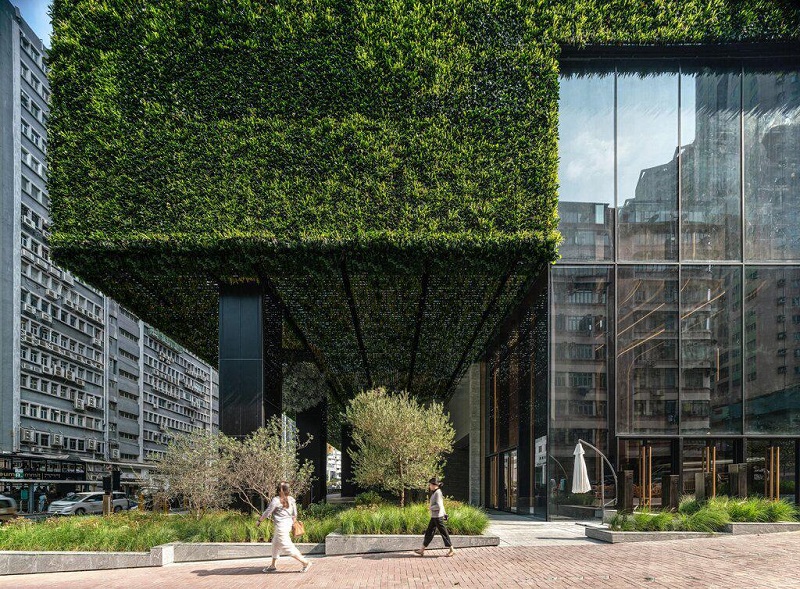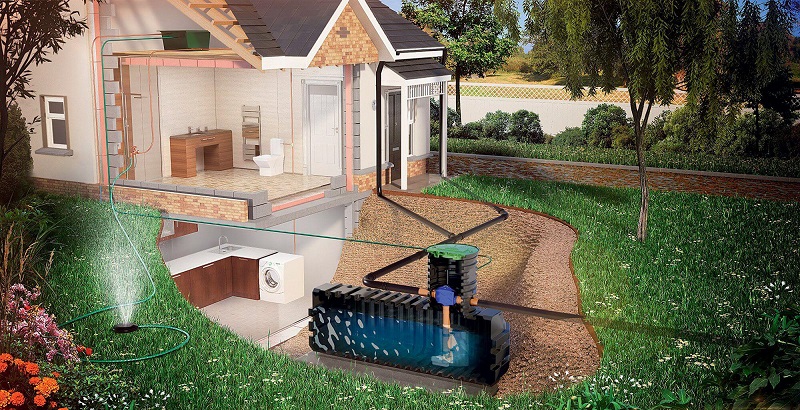As the construction industry has become increasingly aware of the urgency of addressing climate change, the adoption of eco-friendly building techniques has increased dramatically in recent years. With environmental awareness and awareness of climate change emerging, architects, builders, and homeowners are all adopting cutting-edge solutions that prioritize ecological harmony as well as human well-being. A growing number of eco-friendly building techniques is rooted in the recognition that conventional construction techniques often adversely affect the environment. Traditional structures produce an impressive amount of trash, natural resources are depleted, and significant amounts of carbon are emitted. In contrast, eco-friendly building methods take a comprehensive approach that considers a building’s entire lifecycle in order to reduce these adverse effects.
Increasing energy efficiency in buildings can result in significant reductions in greenhouse gas emissions, and it accounts for a substantial portion of the world’s energy use. Environmentally responsible construction emphasizes energy efficiency as a central tenet. Consequently, modern insulation systems, energy-saving appliances, and viable power sources such as solar energy and geothermal heating have been implemented. The use of environmentally friendly, sustainably sourced materials is a high priority for eco-friendly structures. Traditional building methods often include concrete and steel, which have high embodied energy and increase carbon emissions during production. Materials like recycled wood, salvaged wood, and bamboo are sustainable and environmentally friendly alternatives. As the demand for sustainable buildings rises, eco-friendly practices are expected to become more commonplace, resulting in a more resilient and sustainable built environment.

Source: New World Development, Hong Kong
Solar panel systems have become a potent alternative to traditional energy sources in the search for clean and renewable energy sources. Using the sun’s free and abundant energy to create power, photovoltaic (PV) panels generate electricity. This cutting-edge technology has revolutionized our energy usage in recent years, reducing our dependence on fossil fuels and revolutionizing the way we think about energy. An advantage of solar panel systems is their ability to capture sunlight, a potentially unlimited source of energy. Through photovoltaic processes, solar energy can be converted into electricity. By absorbing this energy, solar panels reduce carbon emissions and environmental impact and eliminate the need for conventional power networks and non-renewable energy sources. The technique generates electricity by turning sunlight into electricity, eliminating the need to burn fossil fuels. Energy efficiency is an essential component of solar panel systems. Conventional energy production methods such as coal and natural gas are associated with significant environmental degradation and greenhouse gas emissions. As an alternative, solar panels produce clean energy without releasing harmful pollutants, making them environmentally friendly.
Aside from improving energy efficiency, solar panel systems have numerous other advantages. For example, they provide a decentralized energy generation approach that enables individuals, businesses, and communities to produce their own electricity. As a result, transmission losses are reduced, making the distribution of energy more efficient because electricity is transmitted over a long distance. A solar panel system is dependable and affordable over time since it requires little upkeep. It is possible to produce current from solar energy systems for decades after installation, providing a reliable and consistent energy supply. The technology of solar panels is also constantly improving, increasing their overall capacity for energy production. These improvements include improved efficiency and storage accommodations. The adoption of solar panel systems is an essential step in achieving energy efficiency and transitioning to a more sustainable energy future. In addition to lowering our dependence on fossil fuels and minimizing carbon emissions, solar panels provide a self-sufficient and decentralized energy generation model through the use of pure, renewable energy from the sun. The extended lifespan, low maintenance requirements, and financial incentives of solar panels make them an affordable option. Our pursuit of a more energy-efficient and greener future will lead to solar panels becoming more and more critical as technology advance.

Photovoltaic Panel System (Adobe Stock Image)
To solve water scarcity and promote sustainable water management, rainwater collection devices have become increasingly important. In addition to conserving water and reducing dependence on conventional water sources, rainwater collection and use is also a great way to ease droughts and water shortages. In addition to being collected, stored, and used for potable water, rainwater runoff from roofs, surfaces, and drainage systems can also be used for irrigation, toilet flushing, laundry, and other similar applications to reduce the amount of treated water required. As a sustainable and economical alternative to using only treated water for non-potable purposes, rainwater harvesting systems provide an excellent option. Because rainwater is naturally gentle and free of chemicals used in water treatment procedures, it’s suitable for gardening, washing cars, and flushing toilets. Individuals and towns can significantly reduce their water bills and the strain on public water supply systems by using captured rainwater for these purposes.
The rainwater collection system reduces stormwater runoff and flooding, thus improving stormwater management. Water cannot penetrate the earth when it rains heavily due to conventional urban surfaces like concrete and asphalt, resulting in rapid runoff and straining drainage systems. Water harvesting devices help solve this problem by collecting rainwater and channeling it into storage tanks and infiltration areas. Aquifers are recharging, and groundwater levels are maintained by organically absorbing water into the ground. Using rainwater harvesting systems also contributes to reducing energy-intensive water treatment procedures, which contributes to environmental sustainability. A substantial amount of energy is required to treat and distribute water, in addition to greenhouse gas emissions and environmental damage.
The carbon footprint associated with water supply and distribution is decreased by using captured rainwater, which needs little treatment, resulting in a more sustainable and environmentally friendly approach to water management. By installing rainwater harvesting systems, water is conserved, water scarcity is reduced, and sustainable water management practices are promoted. By collecting and using rainwater for non-potable purposes, these systems reduce reliance on conventional water sources, relieve pressure on water supply systems, and aid in stormwater management. Additionally, by lowering the energy needed for water treatment, rainwater harvesting systems contribute to financial savings and environmental advantages. The use of rainwater harvesting devices is a significant stance towards a more sustainable and resilient water future as the need for water conservation becomes more pressing.

Source: Build -It UK Magazine (UK’s First Self – Build and Renovation Advice Magazine)
Sensor-based LED lighting has revolutionized artificial lighting control and effectiveness, providing energy efficiency, practicality, and personalization in addition to a range of advantages. By using sensors integrated into LED lighting systems, lighting settings can be optimized based on occupancy, natural light levels, and user preferences, resulting in significant energy savings and enhanced user experiences. The capacity of sensor-based LED lights to react to occupancy is one of its main features. Motion detectors and other occupancy sensors can determine if people are present or absent in a given area. These sensors can be included in LED lighting systems to enable automatic illumination that turns on when someone enters a room and turns off when no one is present. Ensuring that lights are only turned on, when necessary, this capability prevents energy waste and lowers electricity usage. Additionally, LED lights with sensors can change their brightness according to the amount of daylight. An ambient light sensor, also known as a light sensor, measures how much daylight is present in a particular area. By integrating these sensors with LED lighting systems, lights can be dimmed or brightened automatically to maintain ideal illumination levels. Not only does this feature improve energy efficiency, but it also creates a cozier and more attractive environment for users by reducing the use of artificial lighting during the day. The sensor-based LED lights also give you the freedom to customize the lighting based on your preferences.
It is possible to create customized lighting profiles or scenes with the help of a single command or hand gesture on cutting-edge systems. For example, the user may set up a “reading” scene in which the lighting is adjusted to the ideal brightness and color temperature. By supplying the appropriate level and type of light for particular tasks, this customization increases user comfort and happiness while maintaining efficient energy consumption. Sensor-based LED lighting has many benefits for automating artificial lighting systems. These lights offer significant energy savings, enhance user experience, and increase safety and security by responding to occupancy, adjusting to natural light levels, and allowing for user customization. Sensor-based LED lights are poised to become even more complex and incorporated into smart building systems as technology develops, resulting in better energy efficiency, cost savings, and sustainability in general. Sensor-based LED lights are a significant improvement over current artificial lighting technology. Through their sensor technologies, they offer energy efficiency, improved user experiences, adjustable illumination, and greater safety. A new era of intelligent lighting systems may emerge as this technology evolves, with significant improvements in effectiveness, responsiveness, and integration.
 Source: Spectrum Architecture and Interior Design Services Consultant
Source: Spectrum Architecture and Interior Design Services Consultant
It is therefore important to develop environmentally friendly building techniques in order to achieve a more sustainable and environmentally conscious future. The building industry has made a transformational transition towards greener and more sustainable methods in response to the urgent need to combat climate change and protect our planet. Hence, the adoption of ecological building practices will assist in achieving sustainable built environment which is socially, environmentally and economically inclusive of all.
Author: Muhammad Umer Farooq
A passionate Civil – Environmental Engineer dedicated to helping the AEC industry achieve sustainability through the adoption of digital technology. With the help of his writing services, Umer aims to promote awareness about sustainability in the built environment.
 Constructionshows
Constructionshows
